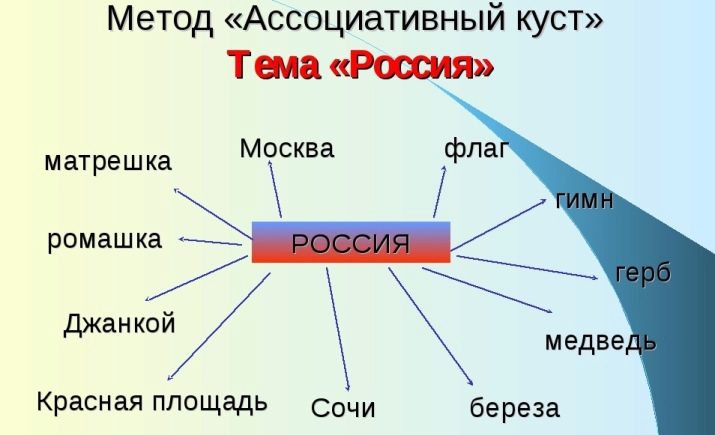How to quickly memorize everything?

In the life of every person there are times when you just need to remember something as quickly as possible. The issue of assimilating large amounts of information for schoolchildren and students is especially relevant. Today, the Internet is literally replete with the methods of various specialists with recommendations on how to quickly memorize everything, where you can choose the best option depending on the personal characteristics of a person.
What types of memory are there?
Memory is voluntary and involuntary. Involuntarily, information is remembered with strong impressions or interest, as well as anything unusual or new. That is, what a person is interested in is remembered by itself. Arbitrary memory is activated when using willpower - this is logical thinking, memorization.
The reasons for poor memory can be as follows.
- Lack of interest in an area requiring memorization.
- Low concentration of attention, lack of attention management skills. This feature is typical for modern society, which daily filters the streams of unnecessary information. The process, which has become a habit, complicates the development of mastery skills in general.
- Lack of attention skills. Memory needs to be developed throughout our lives.
- Physiological factors - such as vitamin deficiencies and lack of fresh air can significantly impair the memory capacity of the brain.
- Depression.

Memorization techniques
The most common method is thoughtful reading or comprehension. It is convenient to memorize small amounts of information in this way. For large texts, you will need to first break the material into parts. The procedure will be as follows.
- Slow, careful reading of the material. Mostly out loud. We define the essence and main idea of the information.
- If the material is divided into parts, then we comprehend each part separately and define the keywords in each.
- We rewrite the material manually on paper, delving into the essence.
- Retelling of the rewritten.
- We rewrite what is remembered.
- Again, we re-read the entire amount of information in full and retell.

Edge effect German psychologist Hermann Ebbinghaus is based on the fact that a person quickly remembers the information that is at the beginning and end of the text. This method helps to quickly memorize the most difficult and incomprehensible moments of the material. To do this, you need to select such fragments and try to learn them first or last.
Another method is called the "Ebbinghaus curve". The scientist has built a special technique so that information can be memorized for a long time. The basis is repetition of material at regular intervals: the first time - immediately after reading, the second - after 20 minutes, the third - after 8 hours, the fourth - one day after the third repetition.
Physicist R. Feynman proposed this algorithm, based on the advantage of explaining complex material in simple words.... This really makes the memorization process much easier. The principle of the so-called Feynman method lies in the following points:
- abstract writing of the necessary information;
- complex fragments should be written in simple words without complex sentences and concepts;
- all the material is assembled into a text so that a primary school student (about 8 years old) can understand it.

Rereading or listening to such a text, a person easily assimilates the material and notices possible gaps in knowledge. As a check, you can ask for help from a friend, relative, or the same child if he is interested in the topic. The listener can and should even ask questions and ask for clarification on some points. If it is not possible to clearly explain the material, then it is worthwhile to understand the topic in more detail. You can also write explanations. In such cases, special attention is paid to the most confusing and illogical moments.
Interference method acts like this. Similar memories have the ability to confuse and mislead information. Similar information is best taught in different rooms (or settings) and at different times. Similar information blocks should be alternated with completely different ones.
You can learn to take notes of the material read in simple and understandable words. Or create graphic drawings, each of which will contain the meaning of one or another information block.

The ways
There are 3 main ways of memorizing the necessary material.
- Rational memorization... This method involves the use of logical memory. During the assimilation of information, the process of its comprehension takes place, which greatly simplifies the memorization of the material. Rational memorization not only helps memorization, but also contributes to the training of the intellect. This method of memorization includes highlighting micro-topics in the material, determining the meaning of each sub-topic, drawing up plans, establishing a logical connection between the selected topics.
- Method of mnemonic memorization. A very unusual and useful technique that can save a person from forgetfulness, increase everyday memorization. The method is based on memorization, starting from life experience, translating information into images familiar to consciousness. It is so easy to learn large volumes of material that has no meaning. For example, address, phone numbers.
- Method of rote memorization. This is the usual cramming of the material. The method is the most popular, but less effective.Such memorization can easily fail, confuse, especially at the slightest hesitation in scoring jagged material. With age, the ability to memorize mechanically decreases significantly.

It is worth considering in more detail the mnemonic method. There are actually many such techniques, which makes it possible to choose any one to your taste and for a person's characteristics. Also, mnemonics allow you to quickly master foreign languages and voluminous texts. The main mnemonic techniques are as follows.
- Chain. The pieces of information that need to be remembered are linked by associations. So, we connect the first fragment with the second, the second with the third, and so on. The fragments should be of approximately the same size.
- Matryoshka. The technique is similar to the previous one, but each subsequent block of information has a smaller volume and is included in the previous one.
- Cicero's method. The technique involves the creation of a chain of reference images. By memorizing them, a person is able to reproduce subsequently all the information. It is worth noting that the images should be very bright and memorable.
- Free associations are similar to Cicero's method, but only the images should be spontaneous and not logically conditioned.
- Method of pictograms. For such a technique, it is necessary to compose a letter composed of symbols denoting the meaning of sentences or phrases.
- Multi-digit numbers and numbers can be remembered by division into pairs of numbers, with which certain dates or events can be associated.
Different mnemonic methods can overlap, which helps to achieve the best results in memory training. And the creation of images and associations contributes especially well to its development.

Useful Tips
There are 11 more simple and effective secrets to quickly memorize material.
- When reading, it is worth highlighting the main points and significant words in the text with a bright marker.
- Sing the text of the material to any motive you like or read it in the manner of a prose poem.
- Reading the information should be continued until you fully understand it.
- Reading the text loudly with expression is more likely to be able to focus on important passages.
- Rewriting the text of the material with another (uncomfortable) hand.
- Attracting a partner (assistant) for training.
- Record the text on a dictaphone and periodically listen.
- Interval repetition of material at different time intervals.
- Take a break every 20 minutes of memorization.
- Memorization of the material is best rescheduled for another time if you feel unwell.
- If you are fatigued, a short nap is recommended to help your brain function more efficiently.

You always need to train your memory... You can use even the most primitive methods and methods, as they are able to keep brain activity in good shape.
These activities will be especially useful when paired with young children, encouraging both participants to simplify and better understand the information.








